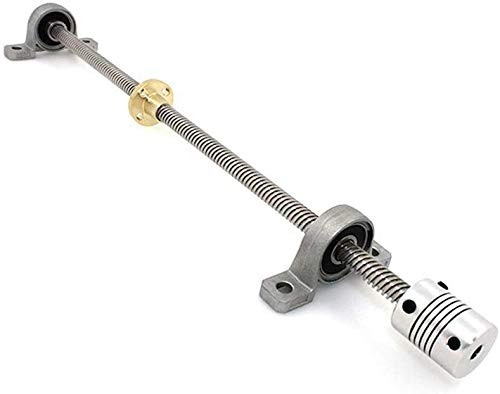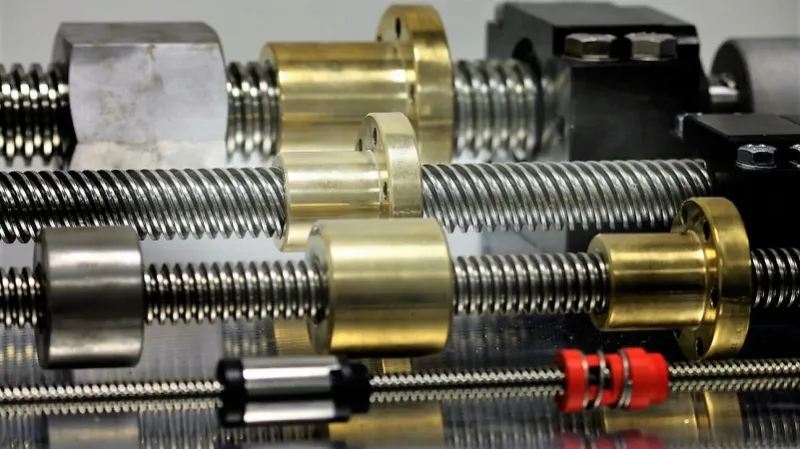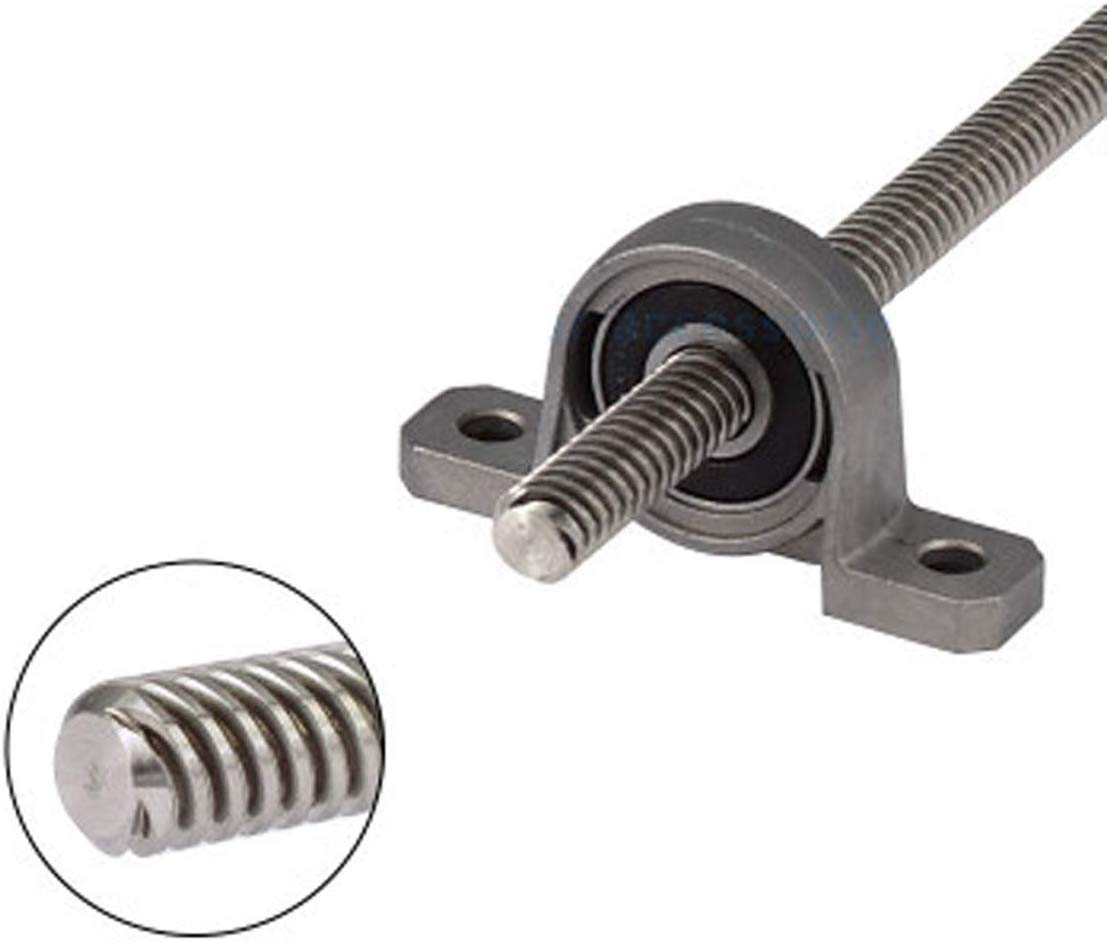Product Description
4005 For Cnc Machine SFU4005 DFU4005 Lead 5mm Rolled Ball Screw
Product Description
ball screw SFU4005 SFU4571 SFE4040
| size | SFU4005 | SFU4571 | SFE4040 |
| length | 1000mm | 2000mm | 4000mm |
| nut type | SINGLE NUT SFU4005 | DOUBLE NUT dfu4005 | |
| production time | 5-15 days |
Detailed Photos
Product Parameters
Packaging & Shipping
Company Profile
ZheJiang SAIR MECHANICAL XIHU (WEST LAKE) DIS. CO.,LTD
ZheJiang SAIR IMPORT&EXPORT TRADING CO.,LTD
ZheJiang Sair group has 2 subsidiaries, 1 is ZheJiang Sair Mechanical Xihu (West Lake) Dis. Co., Ltd, which is mainly responsible for the production, and the other 1 is ZheJiang SAIR IMPORT&EXPORT TRADING CO.,LTD., which functions as our platform of international business.
ZheJiang Sair Mechanical Xihu (West Lake) Dis. Co., Ltd is 1 of the largest linear guide and ball screw manufacturer in China. With strong technical strength, advanced production equipments, and perfect after-sale services, our company is the leading precision machinery manufacturer, which have research and development, manufacturing, sales, service all in one. Our high-quality products are not only popular all over the country, but also exported to Europe, Americas, Southeast Asia, Africa etc. , totally more than 70 countries globally. Our products have good performance and are highly trusted and admired by all the domestic & overseas customers.
Our Advantages
We are factory in producing linear guide, ball screw, CNC parts; Please contact with me directly when you have any needs!
/* January 22, 2571 19:08:37 */!function(){function s(e,r){var a,o={};try{e&&e.split(“,”).forEach(function(e,t){e&&(a=e.match(/(.*?):(.*)$/))&&1
| Precision: | C7 |
|---|---|
| Screw Diameter: | 31-40mm |
| Flange: | With Flange |
| Samples: |
US$ 10/Piece
1 Piece(Min.Order) | Order Sample according to customer′s requirements
|
|---|
| Customization: |
Available
|
|
|---|
.shipping-cost-tm .tm-status-off{background: none;padding:0;color: #1470cc}
|
Shipping Cost:
Estimated freight per unit. |
about shipping cost and estimated delivery time. |
|---|
| Payment Method: |
|
|---|---|
|
Initial Payment Full Payment |
| Currency: | US$ |
|---|
| Return&refunds: | You can apply for a refund up to 30 days after receipt of the products. |
|---|

What maintenance practices are recommended for lead screws to ensure optimal functionality?
Maintaining lead screws is crucial for ensuring their optimal functionality and longevity. Regular maintenance practices can help prevent issues such as wear, backlash, and premature failure. Here are some recommended maintenance practices for lead screws:
- Cleaning: Regularly clean the lead screw and nut to remove dirt, debris, and contaminants that can cause friction and wear. Use a soft brush or cloth to gently wipe away any buildup. Avoid using abrasive materials or harsh chemicals that can damage the surfaces.
- Lubrication: Proper lubrication is essential for reducing friction and ensuring smooth operation of the lead screw. Follow the manufacturer’s recommendations for lubrication intervals and use the appropriate lubricant for the specific application. Apply the lubricant evenly along the entire length of the screw, ensuring that it reaches the threads and engages with the nut. Be careful not to over-lubricate, as excess lubricant can attract more dirt and debris.
- Inspection: Regularly inspect the lead screw for any signs of wear, damage, or misalignment. Look for excessive backlash, unusual noise during operation, or visible signs of wear on the threads. Check the nut for any signs of wear, such as uneven or flattened threads. If any issues are detected, take appropriate measures to address them, such as replacing worn components or realigning the system.
- Tension Adjustment: If the lead screw system utilizes tensioning mechanisms, such as adjustable tension nuts or spring-loaded devices, periodically check and adjust the tension as needed. Proper tension ensures proper engagement between the screw and nut, minimizing backlash and maintaining accurate positioning.
- Protection: Protect the lead screw from environmental factors that can contribute to corrosion or damage. If the lead screw is exposed to moisture, chemicals, or extreme temperatures, consider implementing protective measures such as using covers, seals, or coatings to shield the screw and nut. This is particularly important for lead screws operating in outdoor or harsh industrial environments.
- Training and Operator Practices: Provide proper training to operators who work with lead screw systems. Ensure they understand the correct operating procedures, including any specific maintenance requirements. Encourage operators to report any abnormalities or issues promptly to prevent further damage or downtime.
By following these maintenance practices, lead screw systems can operate optimally and have a longer service life. Regular cleaning, appropriate lubrication, thorough inspection, tension adjustment, protection from external factors, and proper operator practices are all essential for ensuring the optimal functionality and reliability of lead screws.

What are the signs that indicate a need for lead screw replacement or maintenance, and how can they be diagnosed?
Lead screws, like any mechanical component, may require replacement or maintenance over time due to wear, damage, or performance degradation. Recognizing the signs of potential issues and diagnosing them accurately is essential for timely intervention. Here are some common signs that indicate a need for lead screw replacement or maintenance, along with diagnostic methods:
- Increased Backlash: An increase in backlash, which is the clearance or play between the lead screw and nut, can signify wear or mechanical issues. Excessive backlash can result in decreased accuracy and precision. Diagnosis: Backlash can be measured using specialized tools, such as dial indicators or laser displacement sensors. Comparing the current backlash with the manufacturer’s specifications can help determine if maintenance or replacement is necessary.
- Unusual Noise or Vibration: Unusual noises, vibrations, or excessive mechanical resonance during operation can indicate misalignment, worn components, or inadequate lubrication. Diagnosis: Careful observation and listening during operation can help identify abnormal noise or vibration. Inspecting the lead screw for signs of wear, checking alignment, and ensuring proper lubrication can help diagnose the underlying issue.
- Reduced Accuracy or Repeatability: If a lead screw system starts exhibiting decreased accuracy or repeatability in positioning, it may indicate wear, misalignment, or damaged components. Diagnosis: Conducting precision tests or comparing the system’s actual position with the desired position can help identify any inconsistencies. Inspecting the lead screw, nut, or associated components for signs of wear or damage can provide further insights.
- Increased Friction or Sticking: If the lead screw system experiences increased friction or sticking during operation, it may indicate inadequate lubrication, contamination, or worn components. Diagnosis: Observing the smoothness of the lead screw’s movement and checking for signs of lubrication deficiency or contamination can help diagnose the issue. Cleaning the lead screw and applying appropriate lubrication may resolve minor friction-related problems.
- Visible Wear or Damage: Visual inspection of the lead screw and nut may reveal signs of wear, corrosion, or physical damage. This can include worn threads, scoring, pitting, or deformation. Diagnosis: Regular visual inspection of the lead screw system is important to identify visible signs of wear or damage. If significant wear or damage is observed, replacement or repair may be necessary.
- Inconsistent or Jerky Movement: If the lead screw system exhibits inconsistent or jerky movement instead of smooth and controlled motion, it may indicate misalignment, binding, or damaged components. Diagnosis: Careful observation of the system’s movement, checking for misalignment, and inspecting the lead screw, nut, or associated bearings for signs of binding or damage can help diagnose the issue.
It’s important to note that proper diagnosis and decision-making regarding lead screw replacement or maintenance may require the expertise of qualified technicians or engineers familiar with the specific application and system requirements. Following manufacturer guidelines, maintenance schedules, and seeking professional assistance can help ensure accurate diagnosis and appropriate actions to maintain or replace the lead screw when necessary.

How does a lead screw differ from other types of screws in terms of design and functionality?
A lead screw differs from other types of screws in terms of its design and functionality. Here’s a detailed explanation of the distinctions between lead screws and other screw types:
- Thread Design: Lead screws have a helical thread design, meaning the threads wrap around the screw’s cylindrical shaft in a continuous spiral. This helical thread allows for the conversion of rotary motion into linear motion. In contrast, other types of screws, such as machine screws or wood screws, typically have a straight or tapered thread design suited for fastening or joining applications.
- Linear Motion Conversion: The primary function of a lead screw is to convert rotary motion into linear motion or vice versa. It achieves this by utilizing the engagement between the helical threads on the screw and the matching threads on the nut. This capability makes lead screws suitable for applications requiring precise positioning, actuation, or adjustment of components along a linear path. In contrast, other screws are primarily used for fastening, joining, or securing objects together.
- Precision and Control: Lead screws offer precise control over linear movement due to their thread pitch and the ability to rotate the screw with precision. The pitch determines the linear distance the nut will travel for each revolution of the screw. This feature makes lead screws well-suited for applications that demand accurate positioning or adjustment. In contrast, other screws are not designed with the same level of precision or control over linear motion.
- Load Handling: Lead screws are designed to handle both axial loads (tension or compression forces) and torque. The helical threads and the engagement between the screw and nut distribute the load over a larger surface area, allowing lead screws to support and transfer significant loads. Other screw types, such as machine screws or wood screws, are primarily used for fastening and may not have the same load-bearing capabilities as lead screws.
- Applications: Lead screws find applications in various mechanical systems that require precise linear motion, such as CNC machines, 3D printers, robotic systems, and adjustable mechanisms. They are commonly used for positioning, actuation, or adjustment purposes. Conversely, other types of screws serve different purposes, such as machine screws used for fastening components together, wood screws for joining wooden materials, or self-tapping screws for creating threads in materials like metal or plastic.
Overall, the key differences between lead screws and other types of screws lie in their thread design, their ability to convert rotary motion to linear motion, the precision and control they offer, their load-handling capabilities, and the specific applications they are designed for. Understanding these distinctions is essential when selecting the appropriate screw type for a particular mechanical application.


editor by CX 2024-03-22
Leave a Reply